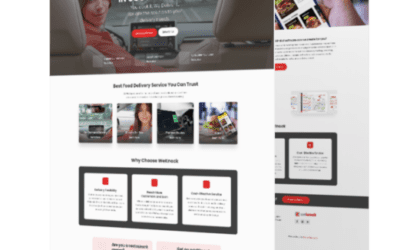Planning for your online store/e-commerce website is crucial for your success, the better your plan is the better experience you’ll have in e-commerce and the easier it will be for you to grow your business online.
Here are the 5 pillars, everyone should plan for before opening the doors to their online store.
1. Get your product numbers and variations early on:
It’s easy to go online and start your store with just one product and to act quickly on your idea, but if you want to have long-term success and sustainability you need to nail your products, think long-term figure out how many products you intend to sell during the next year or two and how many variations of such products for example if I’m selling T-shirts I will have two main variations size and colour so for every product that I intend to have online it will have about three different sizes and five different colours, creating a valuable product like that is a little bit more complicated than one simple product let’s say a downloadable ebook, and planning for this from the beginning will save you expensive mistakes and wasted time.
2. Shipping and taxes:
You need to decide whether you’ll be selling only two customers from your own country or all around the world or certain specific countries only, it’s important to know this before you embark on your e-commerce journey, here’s an example about Canada each province or territory has its own sales tax system, in order to get the taxes that you need to charge on top of your product it will generally depend on what you’re selling and where you and your customer are located, no charging taxes at all or charging the wrong taxes can lend you in hot water with your tax authority or worse with the tax authority of more than one country, so you need to ensure you are aware of the taxes in the different provinces or States and the countries where your e-commerce website would be active.
3. Integrations:
If you are going to join any other payment schemes at a later stage you need to be aware of this from day one to know what type of integration will be needed.
There’s also the integration with your shipping company whether you something like Canada Post USPS UPS DHL or another logistics provider. This way you can decrease the reliance on any manual processing and ultimate the whole buying experience for your customer whereby they do receive the tracking information automatically once your shipping label has been printed.
4. The choice of platform to use:
Generally speaking, there are two types of e-commerce platforms:
- A Hosted and template-based platform “SaaS” (example: Shopify, Square, Wix etc.. )
- A flexible and fully customizable (self-hosted) platform like: (Magento, WooCommerce etc.) this part – with integrations -are the only technical parts in your process.
- How to choose the platform that’s right for you?
First, you need to look at things like payment integration, shipping options, and of course your e-commerce website/store design.
Using a SaaS-hosted platform like Shopify is going to be template-based, this means that you either cannot customize the design of your online store or you can but you’re limited to what you can do with it!
There’s also a limitation to what these platforms can or cannot integrate with, you simply have very little control over the functionality AND you can only use what’s already available there, It’s like renting an Airbnb, you can live there but can not change anything.
As for the website design, many of them are getting better at adding more customizable options and open templates but it gets tricky and it’s not easy or cheap to find a web developer that is specialized in the specific platform.So on the face of it, the barrier to entry here is very low but as you grow your business and need more options you may feel trapped, and in most cases, it’s very hard to migrate once you’re already up and running so it’s better to choose the right platform from the get-go.On the other hand, flexible and customizable self-hosted platforms like Woo will give you more control and more flexibility over your e-commerce design and functionality, they grow with your business, and 9 times out of 10, if you need to add new functionality you will find a ready-made plug-in that can do that.
They have a steeper learning curve than SaaS platforms, so the barrier to entry -in the beginning – is a little higher but in my opinion, they work much better, in the long run, and unlike an Airbnb, they give the business owner the keys to their online Kingdom, the sky is the limit!
The most famous example of these platforms is WooCommerce which works closely with WordPress, this ecosystem is used by 40% of website owners around the globe and has millions of capable website developers and designers, it’s easier and very cost-effective to find a good one to work with you.
5. Ongoing security and maintenance:
This is an extremely important aspect of having any website, commerce website or any other!
Reason number one for malware attacks or hacking is usually dated themes, plugins or PLATFORMS!
The extent of your involvement in the ongoing security and maintenance of your online store will depend on which platform you are using.
If you’re using a SaaS platform like Shopify your involvement will be minimal since you’re just renting space on their own network, they virtually maintain it and secure it for their clients, but you still need to apply some best practices (for example: requiring complex passwords and two-factor authentication) as well as managing your users and customers profiles and accounts etc.
If you use a platform like WooCommerce or Magento, your involvement in the overall maintenance and security of your online store will be greater since you need to be updating the core system of your platform as well as any theme or plug-in that you are using, and of course, have a good hosting plan! But fortunately, there is a ton of professionals who can take care of this on your behalf.
(P.S: We do that too, check out our Care Plans Here)
Amr – AKA The Internet Guy.






